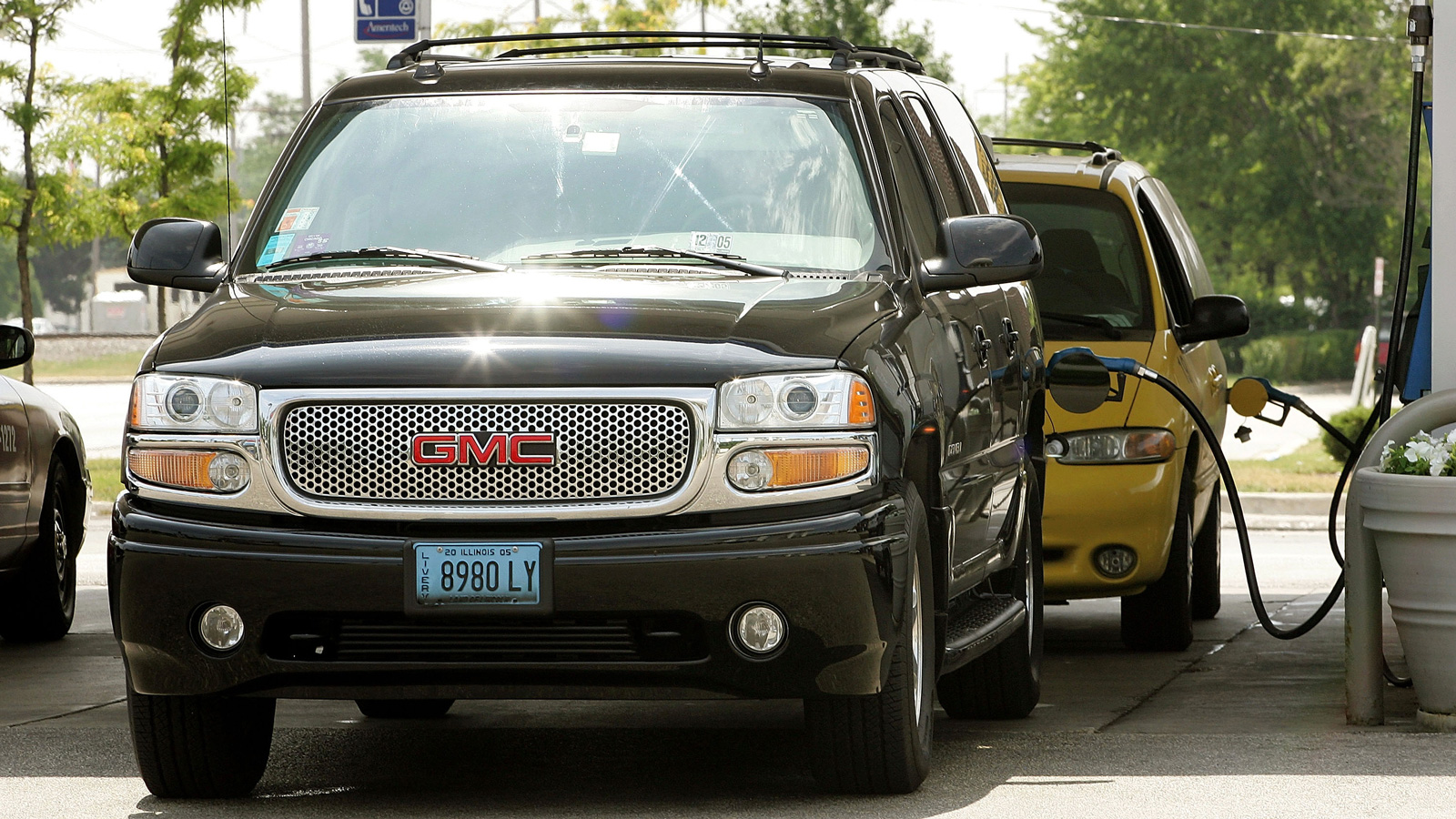The National Highway Traffic Safety Administration, or NHTSA, proposed updated fuel economy standards for passenger cars and light duty trucks on Friday that it said could prevent 885 million tons of CO2 emissions by 2050.
The rules would require that automakers improve fuel efficiency by 2 percent per year for passenger cars and 4 percent per year for light trucks, beginning in model year 2027 and continuing through model year 2032.
The agency, which is a division of the Department of Transportation, said the requirements could achieve an average fleet fuel economy of 58 miles per gallon by 2032, saving 88 billion gallons of gasoline by 2050. That, in turn, could save drivers $50 billion over the lifetime of the vehicles. Current federal standards require automakers to achieve an average fleet efficiency of 49 mpg by 2026.
The announcement follows an April proposal by the Environmental Protection Agency, or EPA, to set much stricter emissions limits for passenger vehicles and light-duty trucks, essentially cutting in half the amount of CO2 and other pollutants manufacturers are allowed to produce.
Combined, the rules could contribute to a dramatic transformation of the automobile industry and its environmental impact. Transportation accounts for 28 percent of the nation’s greenhouse gas emissions, the most of any sector. “The reality is that the biggest single step America can take to control global warming pollution is to reduce the emissions coming out of tailpipes,” Dan Becker, director of the Center for Biological Diversity’s Safe Climate Transport Campaign, told Grist.
While neither rule dictates what types of cars automakers produce, they set overall fleet targets that are challenging to achieve without incorporating a lot more zero-emission vehicles like battery-electric cars and trucks. The EPA predicted that its standards, if finalized, would result in EVs making up as much as 67{7bfcd0aebedba9ec56d5615176ab7cebc5409dfb82345290162ba6c44abf8bc8} of new car sales by 2031. If manufacturers were to fall short of these projections, the DOT standards would at least ensure that they make improvements in the fuel consumption of internal combustion vehicles.
The more aggressive efficiency improvements for light-duty trucks will help tackle what Becker called the “truckification” of the nation’s vehicles, but he said the proposed rules should be even stronger, given the NHTSA’s mandate to set the strictest standards possible. Concerned over the threat of supply disruptions after the Middle East oil embargo of the mid-1970s, Congress authorized NHTSA to set mandatory fuel economy standards, called Corporate Average Fuel Economy, or CAFE, for vehicle manufacturers at the “maximum feasible” amount.
In a statement, the Alliance for Automotive Innovation, an industry trade group, did not comment on the specific efficiency targets, but called for a more streamlined regulatory process, rather than having multiple agencies set rules. “Conflicting and overlapping rules are complex and expensive,” said John Bozzella, group president. “The best policy would be a return to a single national standard to reduce carbon in transportation.”
The NHTSA standards would also impact heavy-duty pickup trucks and work vans, requiring a 10 percent improvement per year for many vehicles beginning in model year 2030 and continuing through 2035. Those efficiency gains would save an additional 22 million tons of CO2 by 2050, according to the agency.
Beyond emissions savings, the NHTSA said the new rules would save consumers money at the gas pump and reduce reliance on foreign governments. “Better vehicle fuel efficiency means more money in Americans’ pockets and stronger energy security for the entire nation,” U.S. Transportation Secretary Pete Buttigieg said in a statement.
There will be a 60-day public comment period, during which NHTSA said it would engage with “consumers, unions, automakers, states, environmental groups and others.” The standards are expected to be finalized by the end of this year or the beginning of 2024.

